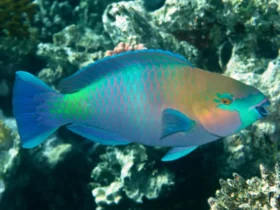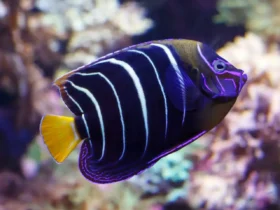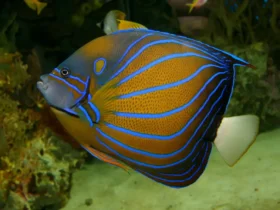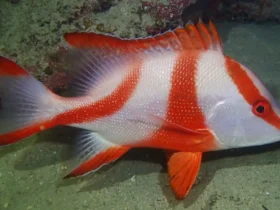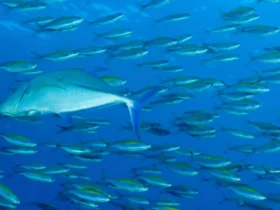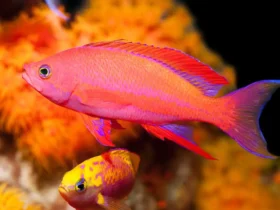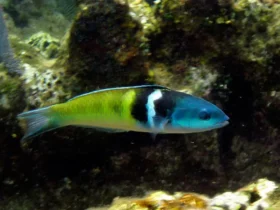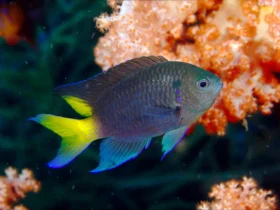As we all know, the Red-tailed Swordfish is one of the popular freshwater ornamental fish, very easy to keep and suitable for beginners in fishkeeping. In addition, they bring uniqueness with their long and pointed tails that look very attractive. The following article will provide useful information about this fish species.
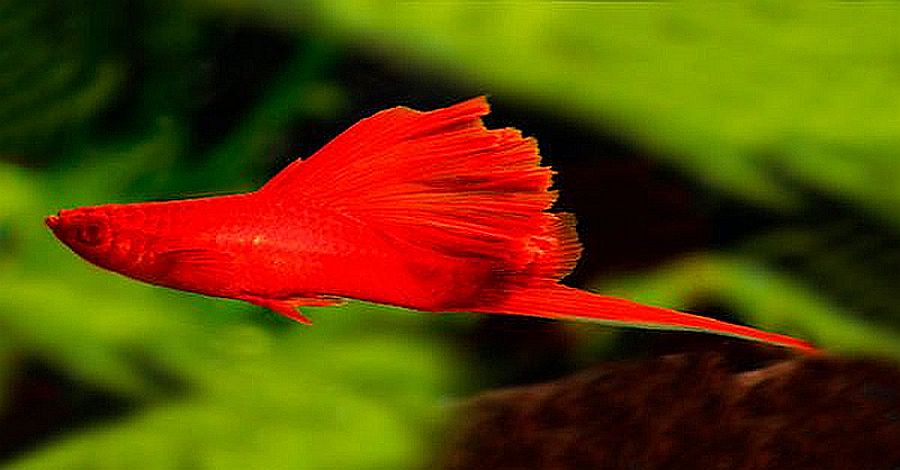
Overview of Pointed-tailed Red Ornamental Swordfish.
Today, let’s explore the characteristics of Pointed-tailed Red Ornamental Swordfish:
Characteristic shape
They have a length ranging from 12 to 16cm, suitable when living in water with a temperature from 18 to 28 degrees Celsius, pH not exceeding 8.3 and they can eat anything, not picky about any type of food.
With their small size, this fish has a rather chubby, cute body belonging to the order Cypriniformes and the family of Cyprinidae. Nowadays, they are widely bred and propagated. In addition, the males of this species have elongated and beautiful fins that are very attractive to females, with a pointed tail resembling a sword, perhaps why they are called swordtail fish.
Female Pointed-tailed Red Ornamental Swordfish have a large belly because they eat and give birth continuously throughout their adulthood. With their small size and agile shape, they can easily navigate through obstacles to grab their favorite food. These fish often swim upside down, which is a playful and unique behavior.
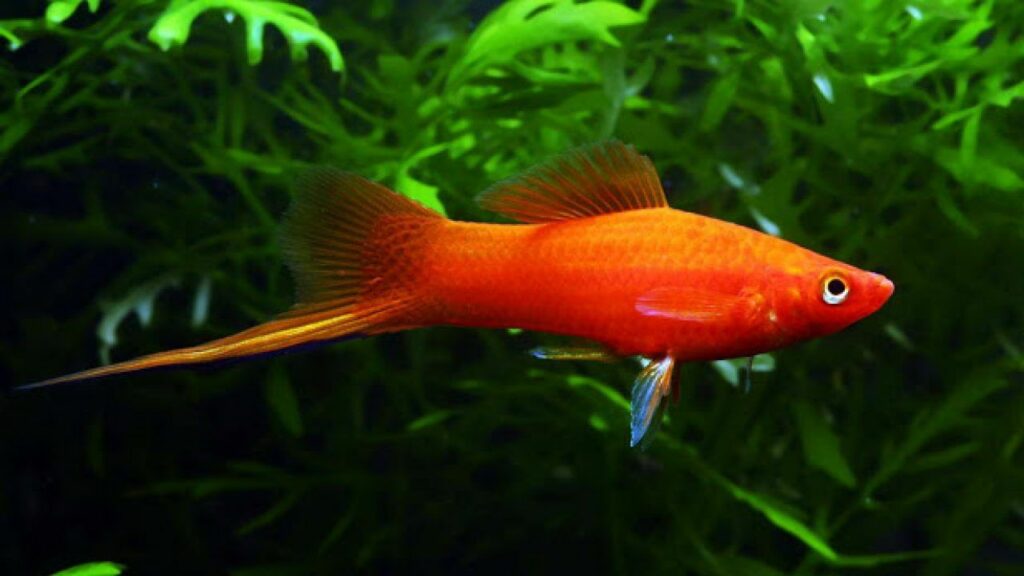
Breeding behavior
The Pointed-tailed Red Ornamental Swordfish is very prolific, meaning they are easy to breed and reproduce. The beautiful tail of the males helps females choose suitable mates. In a suitable environment, they can reproduce freely with an extremely large number of offspring, which is quite remarkable.
In addition, when raising many Pointed-tailed Red Ornamental Swordfish in one tank, we will often see male fish fighting each other to claim a female for themselves. Therefore, it is rare to see swordtail fish quarrel with other species in the tank, but only fight with their own kind. Therefore, during the breeding season, we should separate one male and two females to raise separately, and when the eggs hatch into fry, move the parents to another place because they are not able to raise the fry and may even eat their own offspring.
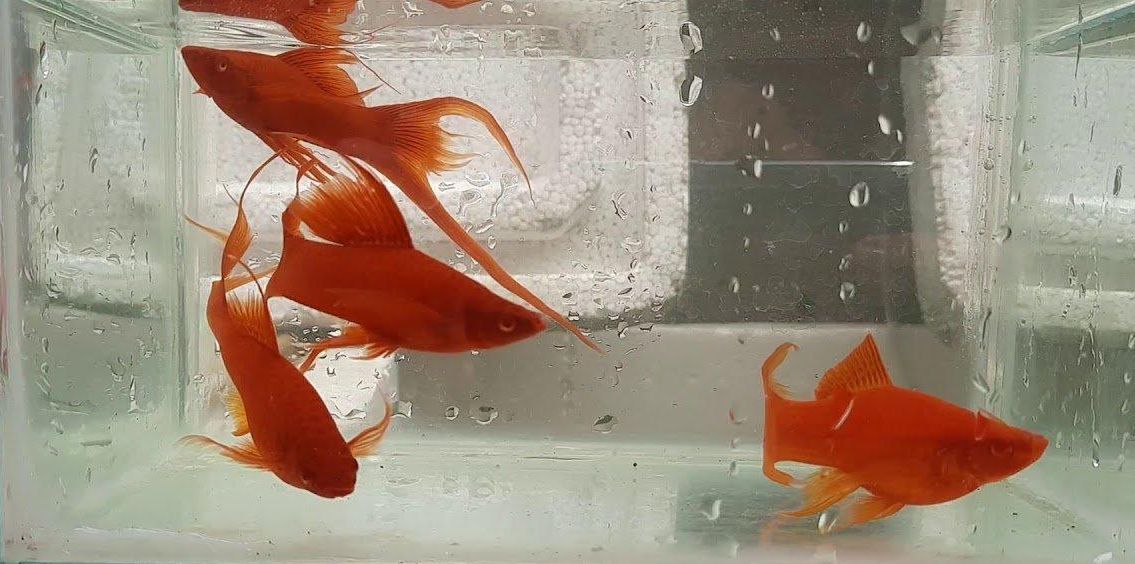
Experience in raising Pointed-tailed Red Ornamental Swordfish
Although they are not very large in size, a suitable tank size is around 100 liters. They can be kept with many other types of ornamental fish, and as mentioned above, this species is very easy to raise. They do not require a specific water filtration system, intense lighting or a large amount of oxygen. As long as they have enough space to swim and move around, they will thrive.
Pointed-tailed Red Ornamental Swordfish prefer a slightly hard and slightly alkaline water environment, while in a softer or more acidic water environment, they are prone to fungal infections and their skin may be affected. You should add some aquatic plants to the tank to make it look more attractive and provide additional food for your other fish.
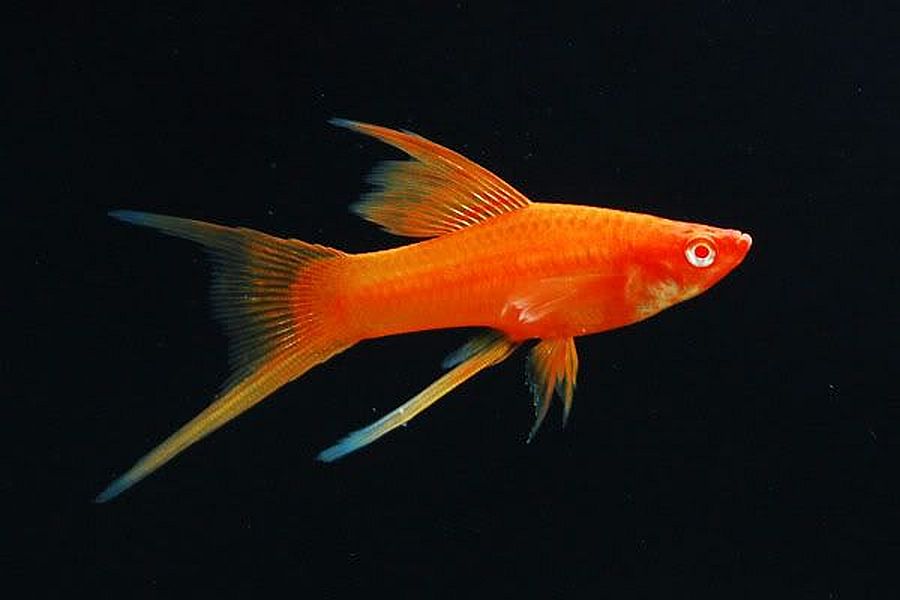
Pointed-tailed Red Ornamental Swordfish’s favorite food.
They are very easy to care for, and they can eat anything from plant debris, crustaceans, insects, and food in bags… as they are omnivores. Usually, we should add live food for them to eat, they are not picky eaters, but we should provide them with a suitable diet, combining both wet and dry food to balance the amount of food for them.
It’s important to feed Pointed-tailed Red Ornamental Swordfish multiple small meals throughout the day and avoid overfeeding, as they are prone to overeating. While they are easy to care for and generally healthy, it’s still necessary to regularly change their water and maintain proper filtration in their tank.
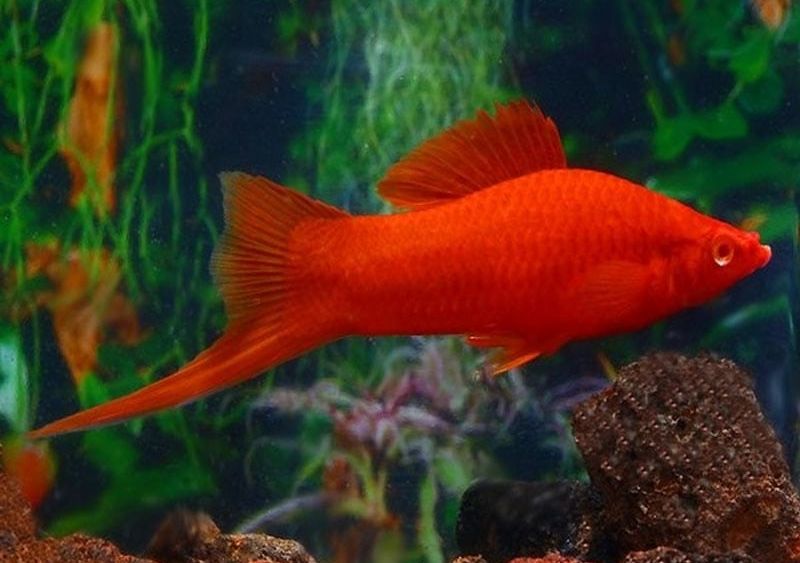
So what are the common types of Red-tailed Swordfish that are currently being raised?
Two commonly farmed species of swordtail fish nowadays
Below are two types of Red-tailed Swordfish that are widely raised, at least once by aquarium enthusiasts:
Red-tailed Single Swordfish
Red-tailed Single Swordfish has only one elongated and pointed tail. It has a red and orange coloration covering its body. Their eyes have both red and black parts. You can consider this when choosing a Red-tailed Single Swordfish.
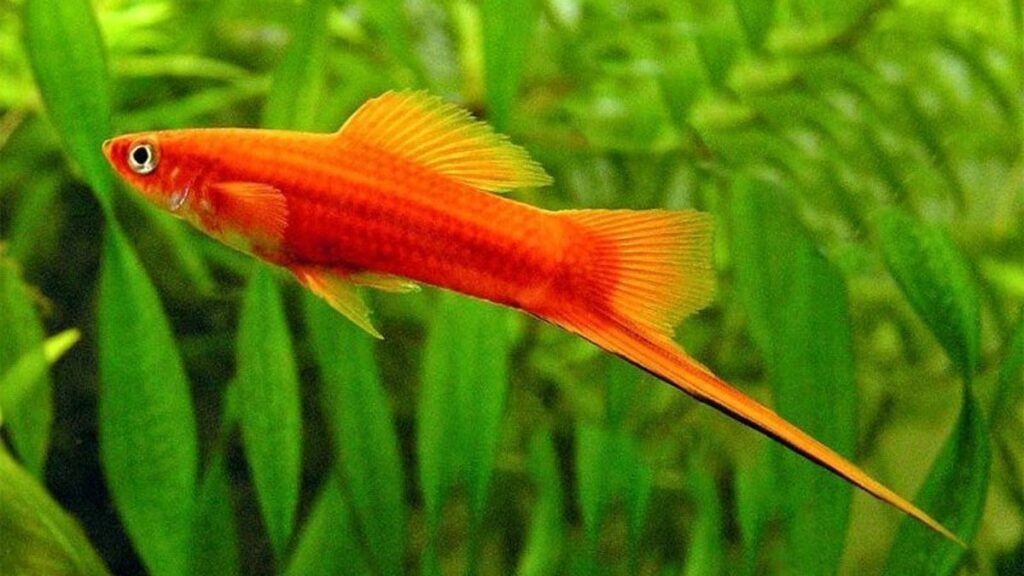
Red-tailed Double Swordfish
Red-tailed Double Swordfish have both parts of their tails elongated and straight like a sword, and they have both red and black eyes. You can also consider the red-eyed koi swordtail fish and the black.
Through this, we can see that Red-tailed Double Swordfish with sharp tails are not only easy to care for and beautiful, but their breeding and reproductive abilities are also very simple. This is truly a species of ornamental fish that everyone who enjoys keeping fish should try at least once.
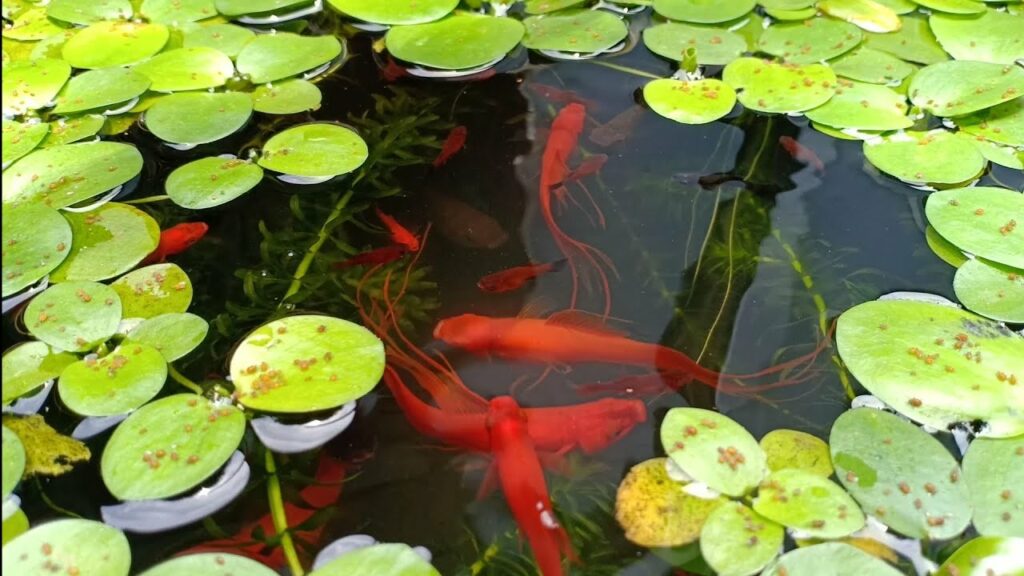
Thank you for sharing all the information about the Pointed-tailed Red Ornamental Swordfish. It’s a fascinating fish that is not harmful if you keep it for a long time, because of its high aesthetic value with its long and sharp tail. Hopefully, the information provided is useful for you, and we look forward to meeting you again in the next topic.
